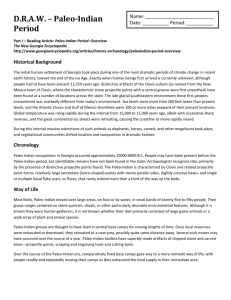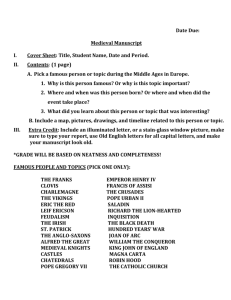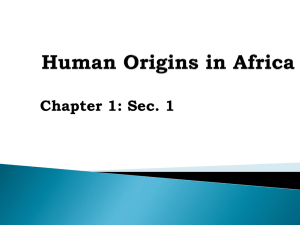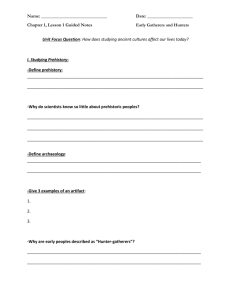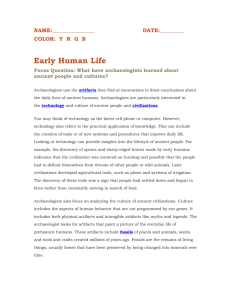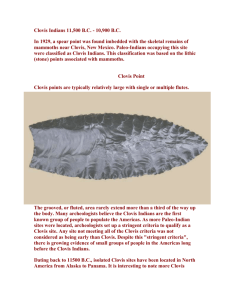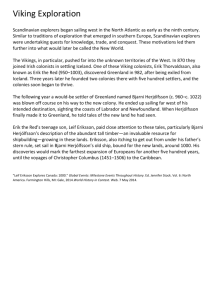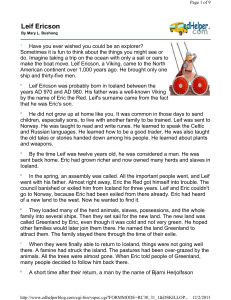9th Grade History Summer Reading Guide
advertisement
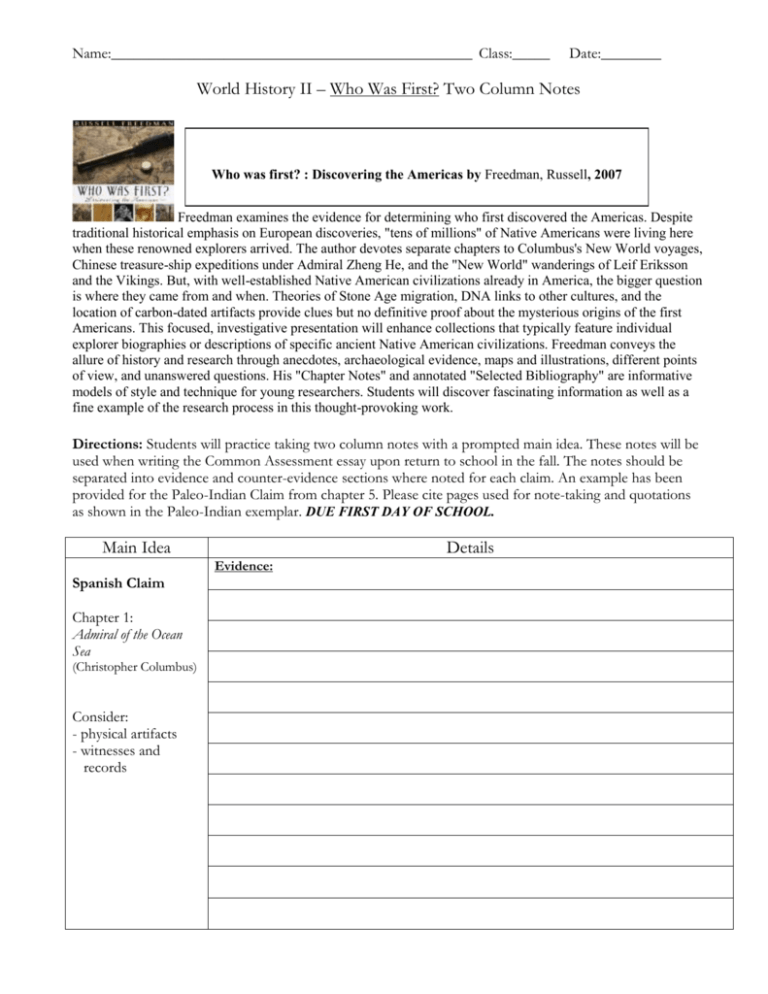
Name:________________________________________________ Class:_____ Date:________ World History II – Who Was First? Two Column Notes Who was first? : Discovering the Americas by Freedman, Russell, 2007 Freedman examines the evidence for determining who first discovered the Americas. Despite traditional historical emphasis on European discoveries, "tens of millions" of Native Americans were living here when these renowned explorers arrived. The author devotes separate chapters to Columbus's New World voyages, Chinese treasure-ship expeditions under Admiral Zheng He, and the "New World" wanderings of Leif Eriksson and the Vikings. But, with well-established Native American civilizations already in America, the bigger question is where they came from and when. Theories of Stone Age migration, DNA links to other cultures, and the location of carbon-dated artifacts provide clues but no definitive proof about the mysterious origins of the first Americans. This focused, investigative presentation will enhance collections that typically feature individual explorer biographies or descriptions of specific ancient Native American civilizations. Freedman conveys the allure of history and research through anecdotes, archaeological evidence, maps and illustrations, different points of view, and unanswered questions. His "Chapter Notes" and annotated "Selected Bibliography" are informative models of style and technique for young researchers. Students will discover fascinating information as well as a fine example of the research process in this thought-provoking work. Directions: Students will practice taking two column notes with a prompted main idea. These notes will be used when writing the Common Assessment essay upon return to school in the fall. The notes should be separated into evidence and counter-evidence sections where noted for each claim. An example has been provided for the Paleo-Indian Claim from chapter 5. Please cite pages used for note-taking and quotations as shown in the Paleo-Indian exemplar. DUE FIRST DAY OF SCHOOL. Main Idea Details Evidence: Spanish Claim Chapter 1: Admiral of the Ocean Sea (Christopher Columbus) Consider: - physical artifacts - witnesses and records Evidence: Chinese Claim Chapter 2: Did China Discover America? (Zheng He) Consider: - physical artifacts - witnesses and records Counter-evidence: What doubts or questions exist about the evidence for this claim? Evidence: Viking/Norse Claim Chapter 3: Leif the Lucky (Leif Eriksson) How do we know about Leif Eriksson’s voyage? What role does archeology play in this claim? Counter-evidence: How reliable are the sources of evidence for this claim? Evidence: Native American Claim Chapter 4: The Not-So-New World How many different civilizations existed in the “New World” before the Europeans arrived? Paleo-Indian Claim Chapter 5: Who Really Discovered America? (Clovis People) Evidence: - Clovis spearheads (p.71) - carbon-dated bones enabled archeologists to estimate age of spearheads (p.71) - “discovery proved that humans were living in North America alongside mammoths, giant sloths, saber-toothed tigers, and other Ice Age creatures that are now extinct.” (p.71) - stone tools left behind at campsites (p.73) - Beringia land bridge (pp. 73-74) Counter-evidence: - Monte Verde, Chile site 1000 years older (land bridge didn’t exist yet) (p.75) - other prehistoric sites at Meadowcroft, Virginia and South Carolina (p.76) - DNA points to Siberian peoples (p.76) - “Many researchers now believe that prehistoric migrants from Asia may have followed a sea route along the Pacific coast” (p.77) - Europeans/Solutreans (similarities to Clovis spearhead but no evidence of boats) (p.79) - DNA evidence suggests European link (p.80) - South Carolina and Brazil sites even older (p.81)
